Hello my fellow students and professors, it's my pleasure to submit my homework participation in this week's edition of the crypto academy. I have participated in the lecture given by Professor @yohan2on on The Governance of the Tron Ecosystem, i learnt a lot and made my further findings just as was stated in the homework rules, now i am back with my homework submission post.
1. Who are Super Representatives, SR partners and SR candidates? "The Governance of the TRON Ecosystem".
Tron Ecosystem
Before going into the question proper, let's first establish a learning foundation by looking at what Tron Ecosystem is.
The Tron ecosystem is a decentralized blockchain for content creators. Here the content creators directly interacts with their customers without the interference of a middleman. There are several products created on the TRON ecosystem, which includes Smart Contracts, decentralized applications(DAPPs), public chain, wallet client etc. The Tron blockchain uses a native token known as TRX, it is used as the governance token of the network.
Super Representatives (SR):
The Tron Blockchain makes use of Delegated proof-of-stake (DPoS) as the consensus algorithm of the blockchain. In the DPoS a number of delegates are selected to create blocks. These selected delegates are what is known as the Super Representatives (SR).
Basically, there are about 27 Super Representative in the TRON network. The Super representatives are responsible for generating blocks, packaging transactions and getting blocks and voting rewards. They also have the right to participate in the voting of TRON network parameters proposals.
On the TRON network, any TRX holder can apply for the position of Super Representatives and the top 27 candidates with the most votes finally becomes the super representatives, while the 28th to 127th are Super Partners. The voting of Super Representatives is done every 6 hours. The election of the Super Representatives are done by TRX Holders in the Tron network. The TRON account holders stakes their TRON token in their account and all staking nodes is eligible to vote during the election of the Super Representative.
The below is a screenshot of Super Representative screenshot from tronscan.org
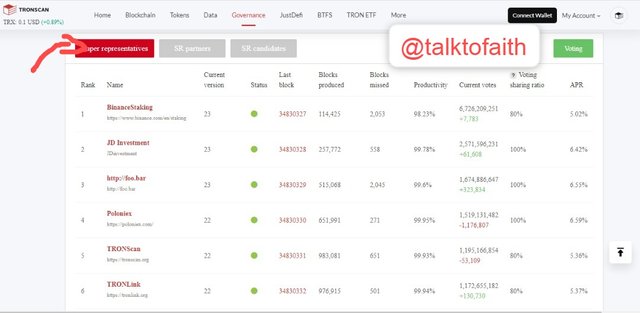
Source
Super Representative Partners:
The Super Representative Partners are chosen from the 28th to 127th applicants of the Super Representatives candidates. They are the ones that had a lesser during the voting of the Super Representatives.
The below is a screenshot of Super Partners from tronscan.org
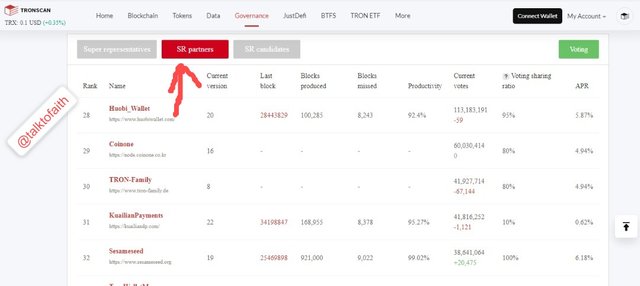
Source
Super Representative Candidates:
These are the 147 candidates/nodes that was voted by the token holderss in the blockchain. After the votes, the 1 to 27 are selected as the Super Representatives, while the 28 to 127 are selected as Super Partners; whereas the remaining 128 to 147 candidates/nodes remains pending till next voting window.
The below is a screenshot of Super Representative Candidate from tronscan.org
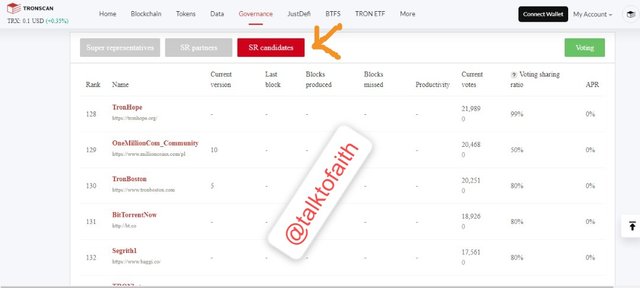
Source
2. What’s the difference between DPoS and POS consensus mechanisms?
Delegated Proof of Stake (DPoS):
DPoS consensus algorithm is built upon the principles of proof-of-stake (PoS), here users of the network vote and elect delegates to validate the next block. The elected delegates are called witnesses or block producers, there responsibility is basically validation of transactions and generation of blocks. Using the DPoS, nodes can vote for delegate by pooling their tokens into a staking pool and connecting those pool to a particular delegate. There is no need for a physically transfer of tokens by nodes to another wallet, instead they use a staking service provider to stake tokens in a staking pool. The selected delegates in turn receives rewards from transactions fees which are shared according to the percentage of token staked by the voter in the subaccounts.
Proof of Stake (PoS):
The PoS consensus algorithm was created in other to solve the problems associated with the proof-of-work consensus algorithm which includes high cost of operation and high consumption of energy.
The PoS uses a pseudo-random election process to select a node who will be the validator of the next block, based on staking age, randomization, and the node’s wealth. This couple of factors allows the selected node to have more rights and contributions in the network.
Delegated Proof of Stake (DPoS) Vs Proof of Stake(PoS):
Basically, DPoS and PoS shares similar principles in staking assets, meanwhile there are still differences between them as listed in my below post:
Security Reasons:
The Delegated proof-of-stake (DPoS) seems to be more secured than the Proof-of-stake (PoS) in my own view, this is because of the nature of the election of nodes in DPoS which is said to be carefully done, unlike PoS which uses a randomize selection of new delegate node. So the selection measure in DPoS is more secured and will prevent blockchain attacks.
Transaction Speed:
DPoS is more likely to create higher transactions per seconds unlike the PoS which seems to be slow in creating transaction.
Appointment Of Delegates
DPoS depends on the elected delegates to carry out the needful Performance in the blockchain, while PoS depends on staked tokens to elect nodes.
3. Write a Step by Step tutorial showcasing how to stake/freeze TRX and vote for SRs:
SR:
From my previous explanation in my number one of the homework, i said that the voting of Super Representative candidates requires the use of TRX.
Login to your TRONLink and click freeze:
So for my freezing and voting transactions, i did it from my TRONLink Pro Android App. As you can see from my below screenshot i already have 10TRX on my wallet.
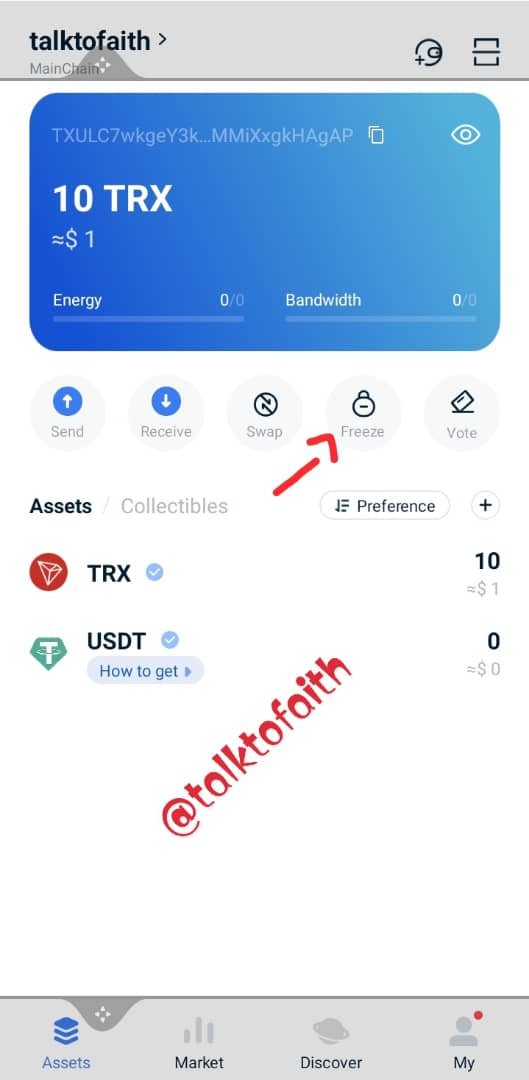
My wallet
From my below screenshot my 10TRX is already displayed.
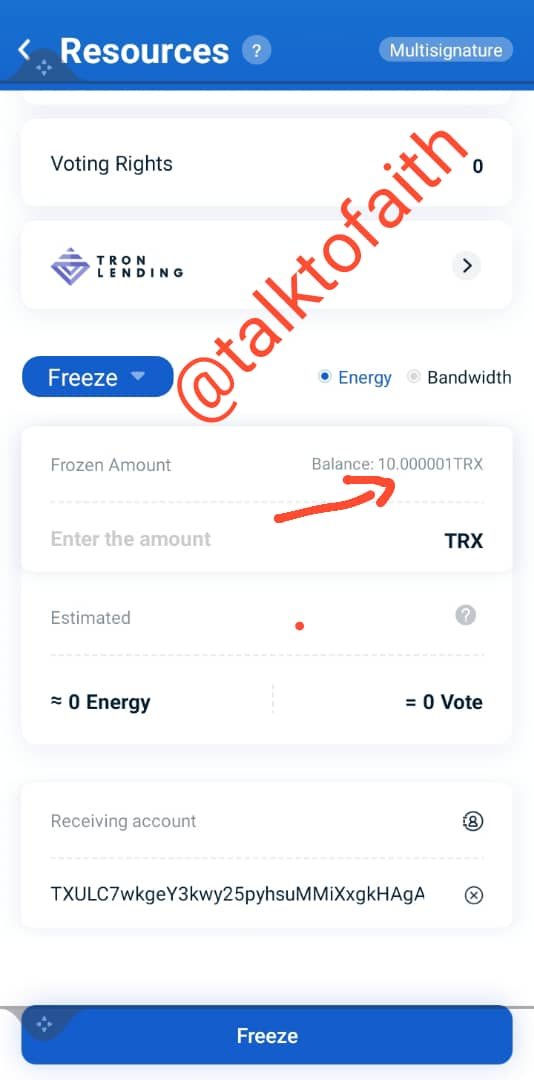
Input the amount of TRX to freeze and click freeze:
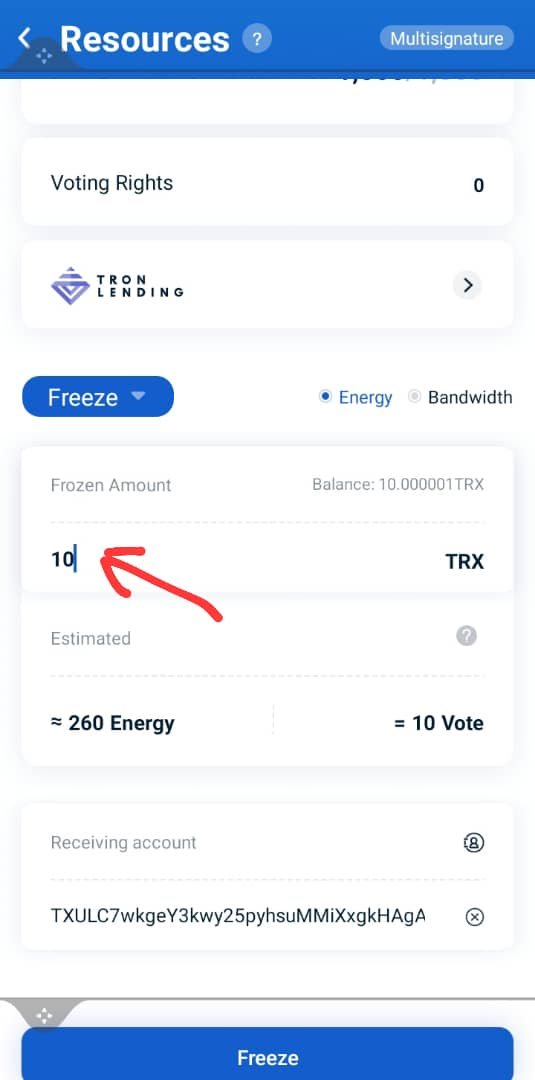
Inputing 10 TRX
Confirm freeze transaction:
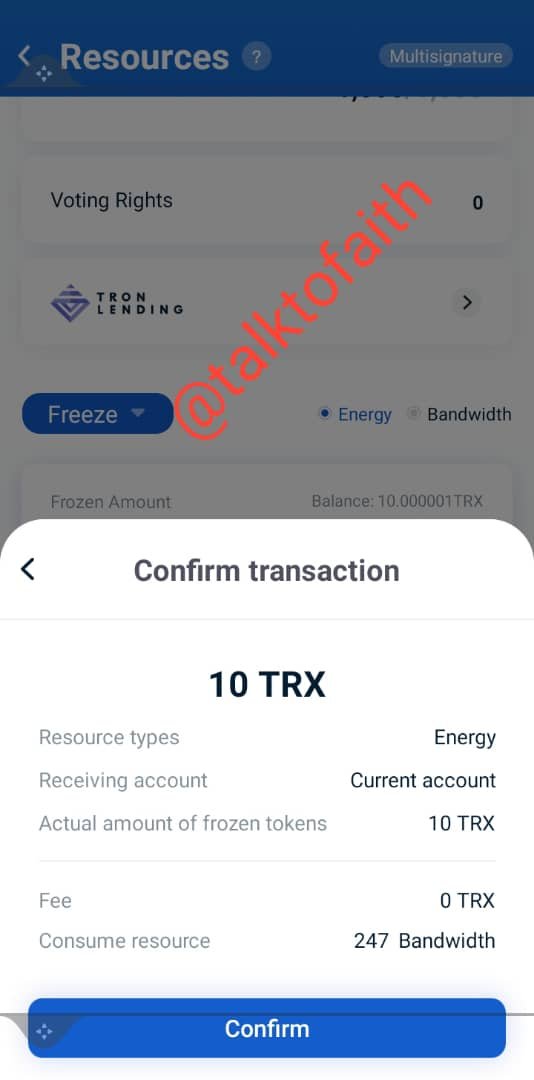
After the freezing is completed, the amount will be displayed to your voting right section as seen in my below screenshot.
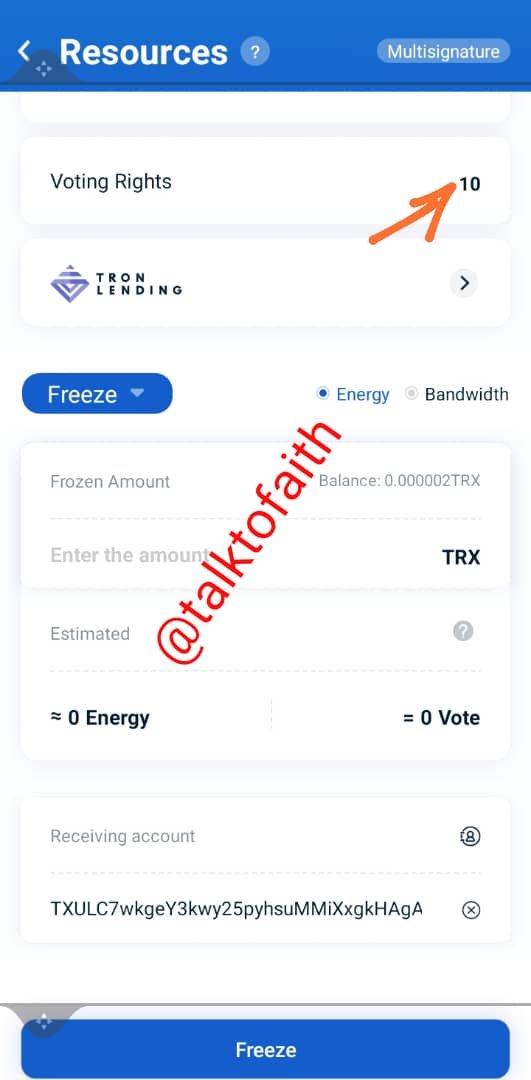
Right to vote with 10 TRX
Return back to the home page and click on vote:
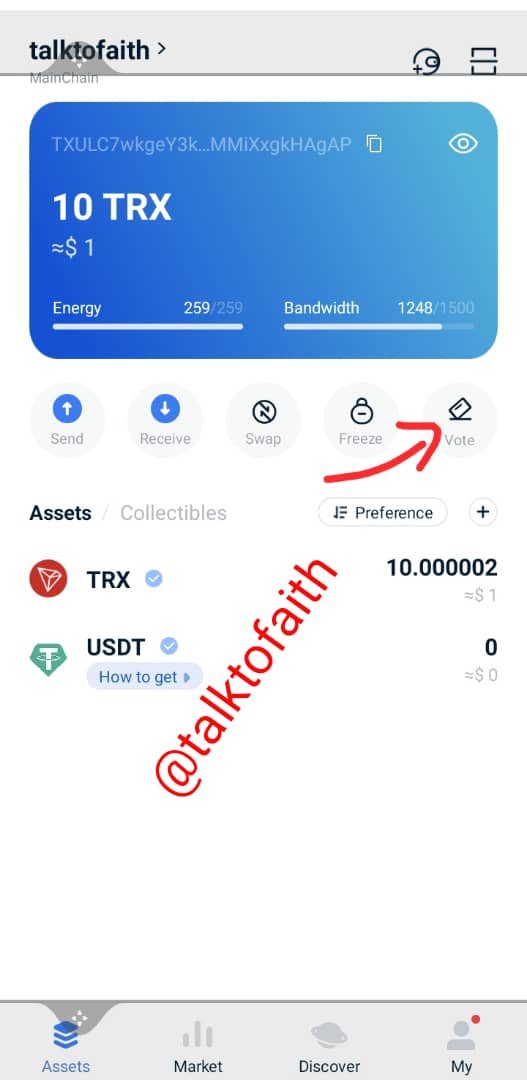
Click on vote
Select Node To Vote For:
From my below screenshot, i selected BinanceStaking.
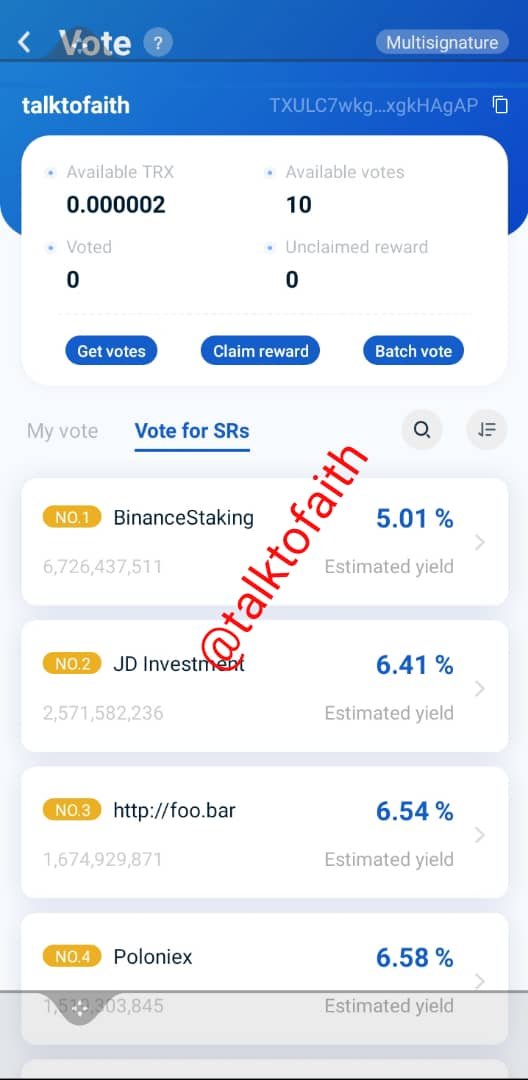
Click on vote:
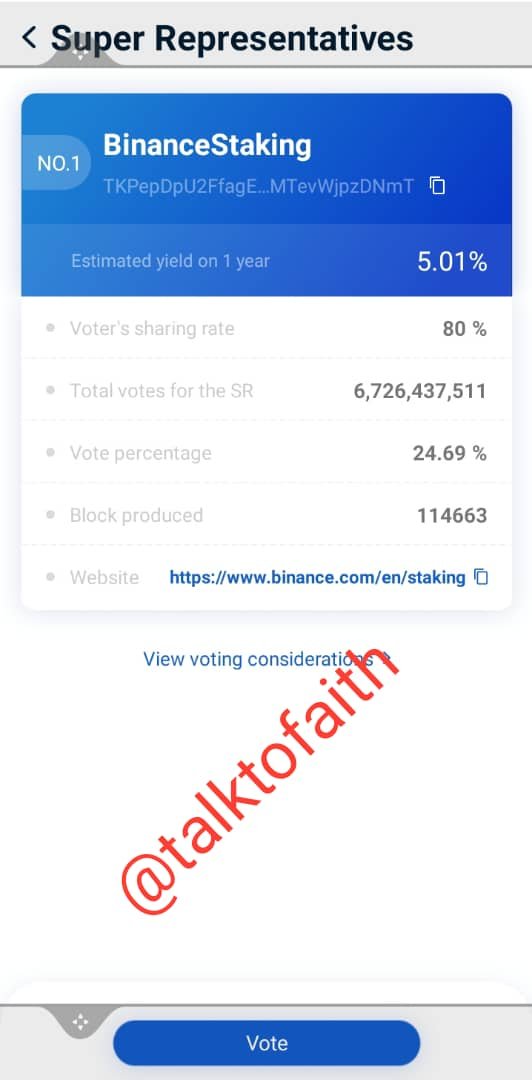
Confirm voting transaction.:
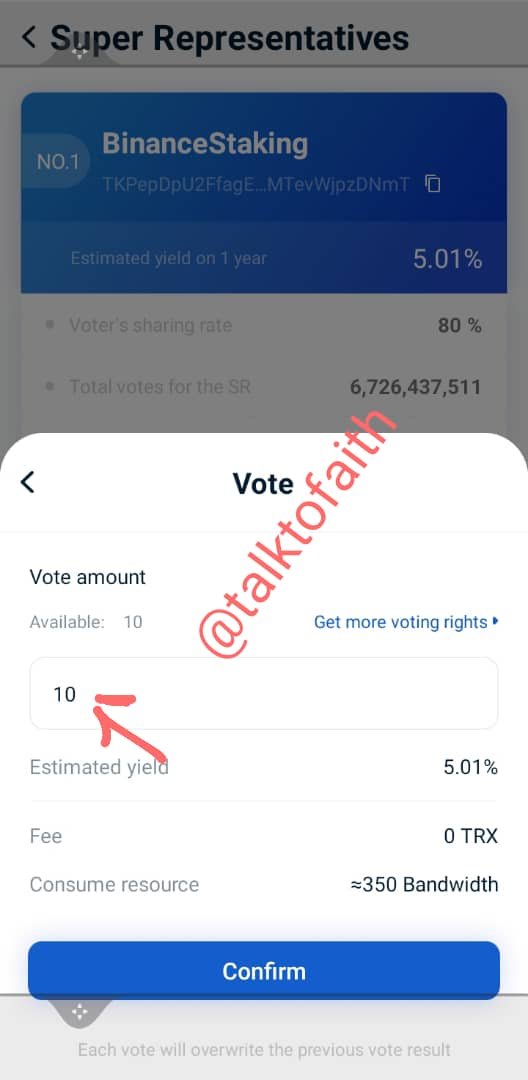
Confirming voting transaction
After the confirmation, your token will be displayed under voted, which indicates that you have completed your vote for SR, as seen from my below screenshot.
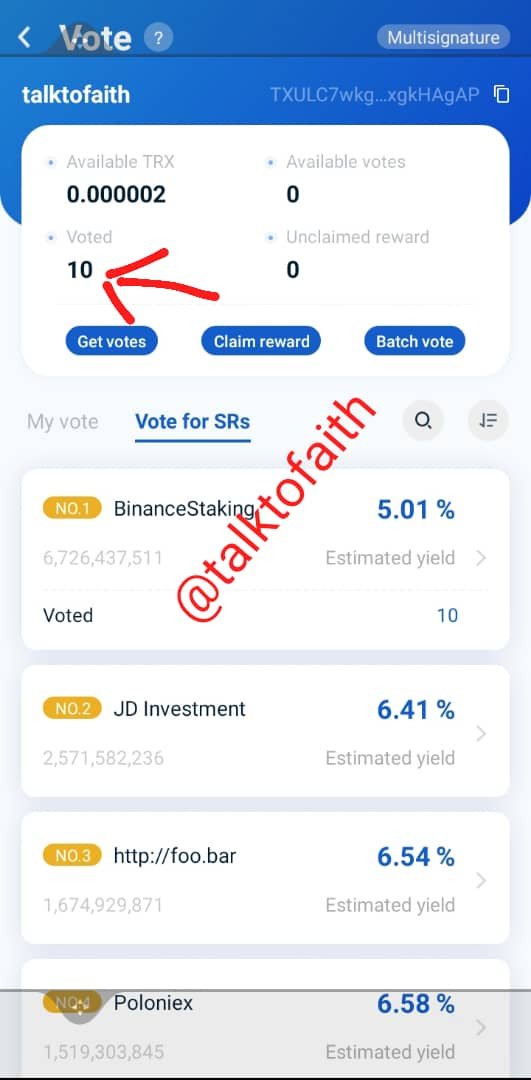
Voted
Conclusion
The TRON ecosystem is a such an amazing and simplified platform. The voting feature of the system is worth it and rewards are shared on the basis of an investor's capacity in the network.
It was an adventurous lecture and home work for me, this is my submission thus far.
Best regards
CC: @yohan2on
Hi @talktofaith
Thanks for participating in the Steemit Crypto Academy
Feedback
Total| 8/10
This is good work. Thanks for taking the time to learn about the Governance of the Tron ecosystem.
Downvoting a post can decrease pending rewards and make it less visible. Common reasons:
Submit
Thank you professor @yohan2on for the grades. It was nice taking part in your lecture. I enjoyed it and i also learnt a whole lot.
Best regards
Downvoting a post can decrease pending rewards and make it less visible. Common reasons:
Submit